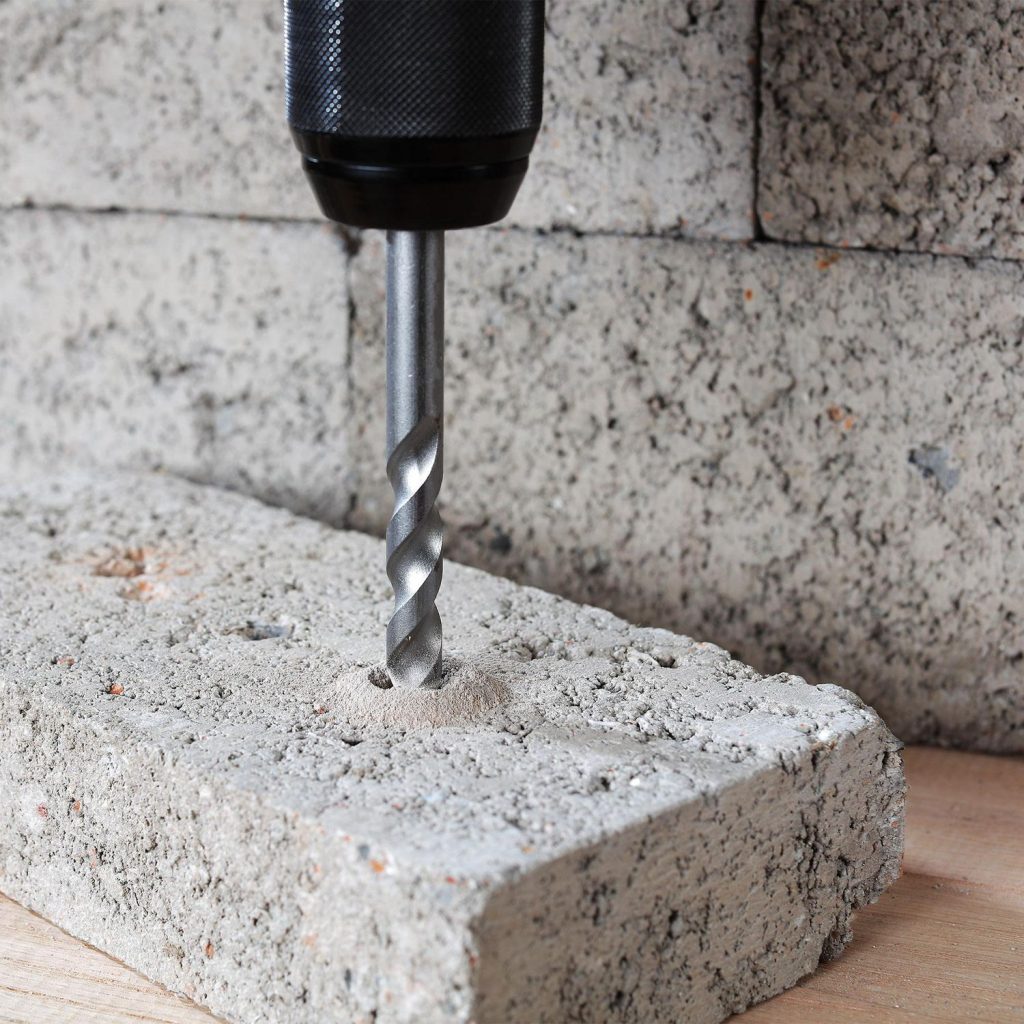Drilling into brick can be a daunting task, especially when the risk of cracking looms overhead. With the right process of how to drill into brick without cracking it, this can be achievable.
To drill into brick without cracking it, use a masonry drill bit. Start with a pilot hole, apply gentle pressure, and clear debris regularly. Maintain a steady hand and use proper technique to ensure clean, precise holes in the brick surface.
In this guide, I’ll explore step-by-step instructions and expert tips to help you drill into brick without cracking it.
9 Steps To Drill Into Brick Without Cracking
Unlock the secrets to drilling into brick flawlessly. Learn how to conquer this challenging task with precision and finesse. Here are nine expert steps to transform your brick projects into seamless masterpieces.

Step 1: Gather The Necessary Tools
Ensure you have all the tools required for the job. You’ll need a power drill with variable speed settings, a masonry drill bit (preferably carbide-tipped), safety goggles to protect your eyes from debris, a pencil or marker for marking the drilling spot, and optionally, water in a spray bottle for cooling.
Step 2: Choose The Right Drill Bit
Selecting the correct drill bit is crucial. Masonry drill bits are designed specifically for drilling into hard materials like brick. Ensure the diameter of the bit matches the size of the hole you need. Carbide-tipped or diamond-tipped bits are durable and well-suited for brick.
Step 3: Mark the Drilling Point
Use a pencil or marker to mark the precise spot on the brick where you want to drill. Measure carefully and double-check the position to ensure accuracy. You may want to use a level to ensure that the hole will be drilled straight.
Step 4: Wear Safety Gear
Before you start drilling, put on safety goggles to protect your eyes from any flying debris. Even though you’re drilling into brick, there’s still a risk of small particles coming loose and causing injury.
Step 5: Start with a Pilot Hole
Begin drilling with a small pilot hole at the marked point. Use a low speed setting on your drill and apply light pressure. The pilot hole will serve as a guide for the larger drill bit and help prevent the main bit from slipping or wandering off course.
Step 6: Drill Slowly and Steadily
Once the pilot hole is established, gradually increase the speed of the drill while maintaining a steady hand. Apply gentle, consistent pressure to the drill. Let the drill bit do the work; avoid forcing it or pushing too hard, as this can increase the risk of cracking the brick.
Step 7: Use Water Cooling (Optional)
For prolonged drilling sessions or particularly tough brick, consider using water as a coolant. Spraying a small amount of water onto the drilling area periodically helps dissipate heat and reduces the risk of overheating, which can weaken the brick and lead to cracking.
Step 8: Clear Debris Regularly
Pause drilling occasionally to clear away debris from the hole. This prevents the bit from becoming clogged or binding, which can increase the risk of cracking. You can use a brush or compressed air to remove debris effectively.
Step 9: Finish with Care
Once the hole is drilled to the desired depth, withdraw the drill slowly and carefully. Avoid any sudden movements that could cause the brick to crack. Clean the area around the hole to remove any remaining debris and ensure a clean finish.
Related Questions
Can You Drill Into The Brick With A Normal Drill?
You can drill into brick with a normal drill, but it’s essential to use the right drill bit. A masonry drill bit, designed specifically for hard materials like brick, is necessary.
These bits typically have a carbide or diamond tip for durability. Besides, using a variable speed drill allows you to adjust the speed according to the hardness of the brick, helping to prevent cracking.
Why Are You Struggling To Drill Into Brick?
Drilling into brick can be challenging due to its hardness and density. If you’re struggling, several factors could be at play. Using the wrong type of drill bit, applying too much pressure, or drilling at too high a speed can all contribute to difficulties.
Also, inadequate cooling or improper technique may cause the drill to overheat, reducing its effectiveness and potentially leading to cracking or other damage.
What Type Of Drill Bit Is Best For Brick?
The best drill bit for brick is a masonry drill bit. These bits are specifically designed to handle the hardness and density of brick. Typically made of tungsten carbide or diamond, masonry drill bits have a sturdy construction that allows them to penetrate brick effectively without becoming dull or damaged.
They come in various sizes to accommodate different drilling needs and are essential for achieving clean and precise holes in brick surfaces.
What Is The Strongest Fixing To Brick?
One of the strongest fixings to brick is the expansion anchor or wedge anchor. These anchors expand against the walls of the drilled hole when a screw is tightened into them, creating a secure hold.
Sleeve anchors and through bolts are also robust options, offering reliable fixing strength to brick. The choice depends on the specific application, load requirements, and the condition of the brick surface.
Conclusion
Drilling into brick without cracking requires careful consideration of both the tools and techniques involved. Choosing the right drill bit, such as a masonry bit designed specifically for brick, is crucial. Employing proper drilling techniques helps minimize the risk of cracking. By following the guidelines of how to drill into brick without cracking it diligently, you can achieve clean and precise holes in brick surfaces without compromising their integrity or appearance.



